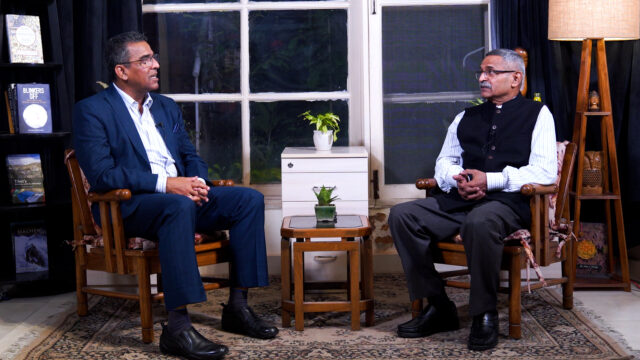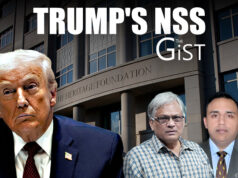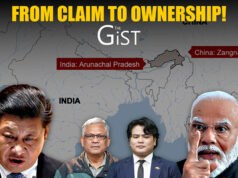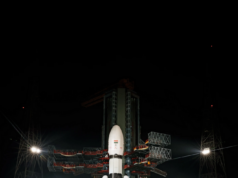NEW DELHI: Excerpts from StratNews Global Editor-in-Chief Nitin Gokhale’s interview with former Director General (Infantry) Lt Gen. Sanjay Kulkarni (Retd) that first appeared on Bharat Shakti. Lt Gen. Kulkarni, who has also commanded forces in the Taiwang sector, spoke extensively about the recent clash between Indian and Chinese troops there and what should be the approach going forward.
Q: What is your take on what happened in Yangtze?
A: It’s been brewing for some time. Even when I was commanding my battalion in 1999, a similar incident happened, and again in 2007, 2008 and since 2006. At Yangtze we raised a rock wall to ensure the Chinese don’t cross and just outside it I had made out a sitting space for them, should they come up, they could sit down. They had a cup of tea and biscuits with us. That was quite common. I do remember once they did come in, and then we had to push them back. And they did that twice when I was there. This seems something strange because the numbers would be very little (in those days) about 30 maximum. But (today’s) 300 or some say 600 that is almost a battalion plus. And doing this kind of a thing looks premeditated, like they have come with the intention of wanting to occupy. It’s a vantage point. We can see them and the Chinese have to climb up. We can see the blacktop road right down below right so they have to park their vehicles and then climb, it takes about 30 or 40 minutes and we can see them unless the weather is foggy or misty, then they can surprise you by coming as close as maybe five meters. So the times have changed.
Q: Have the Chinese become more assertive or has India’s deployment become stronger and so the faceoffs have become more frequent?
A: You know the Chinese mind is very difficult to gauge. Firstly, they can’t be trusted but the gloves are off. So now there is tension. The infrastructure on the Chinese side is very good. They can muster troops, not just at Yangtze, even opposite Tulung La and Bum La. The behaviour of the Chinese, especially after what happened at Galwan, indicates some political backup and these are not rogue elements. They will pressurize India as much as they can and probably India’s exercises with America may have hurt them a bit.
Q: Are the Chinese smarting under the setback they suffered during the Sumdorong Chu incident (1987) where Yangtze control completely passed on to India?
A: The domination that Yangtze has over the Chinese, probably makes them insecure, that the Indians can monitor every move they make. Now Yangtze itself is divided into pockets, so fi they are able to control one pocket, right next to us, they might be wanting to do that. But then our troops are vigilant, and our infrastructure has improved. But let me tell you Nitin, in my entire service opposite the Chinese, I have never ever seen a Chinese helicopter. And today, you hear that their helicopters are flying there, drones are flying there, indicating heightened activity and more attention to the Indian border. The density of roads they have laid in Tibet, the kind of communication lines laid and you can see the towers over there, the houses that are coming up, even the kind of villages they’re building, is indicative that we have to be very, very vigilant because China is capable, they can muster troops much faster. And therefore the need for us to be, upfront there, to be able to confront them. The provocations coming from China might trigger something which could go out of control. So one tactical incident might escalate into a strategic confrontation. They are intruding into our area.
So they need to be told.
Q: You think there should be more dialogue, more messaging from India, on a political level, for the Chinese to understand that this is not in their interests or India’s interest to have these kinds of skirmishes which can escalate or degenerate into something that nobody plans for?
A: Absolutely, because there is no military solution. Definitely our troops can bash them up. They’ll also retaliate, But why should that happen? When I was there, you told them to stop and they would stop. One of them would come forward and we would tell them please go back. This is the wall and they would stay behind it. But now they don’t seem to be doing that and after what happened in Galwan, the Indians are not going to take it lying down.
Q: There is a school of thought that India should be more proactive. We do not enter their territory, so show them what we are. That doesn’t work really does it?
A: These are incursions, let’s go occupy whatever we can occupy even if it is10 meters inside. It is wrong but what happens if such incidents happen more. And then something happens, as in Tulung La in 1975 when an ambush happened (Assam Rifles patrol shot at, four jawans killed). These create tensions.
Q: Looking at the way the incidents are increasing, what should India’s approach be? Increased deployment? Is a role for UAVs and more surveillance and ISR equipment?
A: Not only surveillance, drones is absolutely essential, and we need to have still better infrastructure so that we could mobilize within a very, very short time because if this time they came with between 300 and 600 troops, the next time they might come with 1800. Or they could have lots of trucks because as I told you, there’s a blacktop road down below so you could have trucks lined up with troops. And then human wave tactics. The very fact that we are allowing them to come up, unless we tell them at the road itself that they should not come up. But given our perception of the LAC, new protocols are required for border management and the Chinese must follow them. That’s the problem, they don’t follow protocols. I think there’s a requirement for political intervention.





